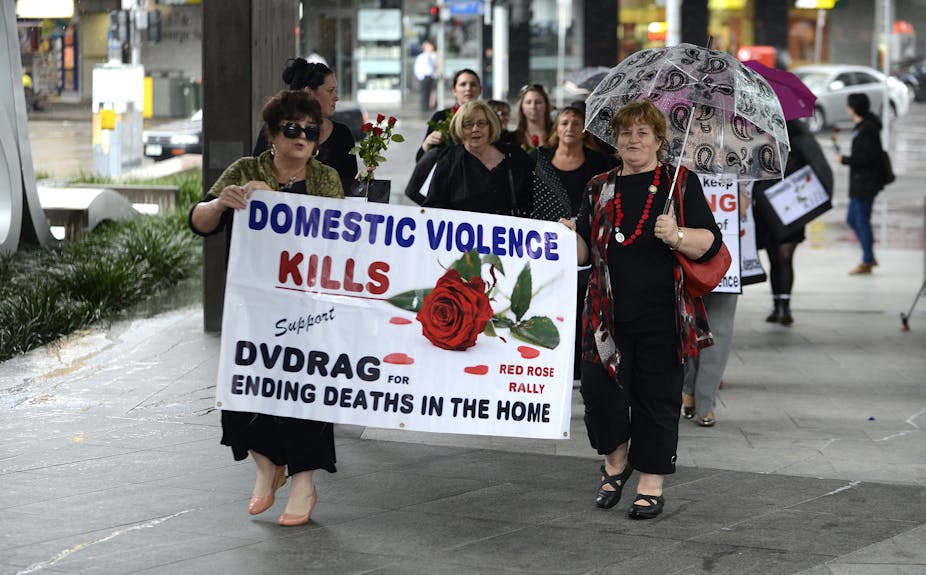This week, the World Health Organisation (WHO) released a report examining global estimates of violence against women. The report examines two forms of violence – intimate partner violence and non-partner sexual violence.
The report reveals the terrifying extent of violence against women in our community. Globally, one in three women will experience an incident of intimate partner violence at some point in their lives. In the most extreme cases, this violence proves fatal. Up to 38% of female homicide victims worldwide having been killed by an intimate partner, current or former.
For non-partner sexual violence the statistics are just as confronting. 7% of women globally have been sexually assaulted by someone other than an intimate partner.
Representing the first systematic study of worldwide incidences of violence against women, the report shows that violence against women is a global problem. It is not specific to one region, one culture or one community. Prevalence was highest in the African region, where 45% of women are reported to be a victim of intimate partner or sexual violence.
But even in the lowest prevalence area - the European region – 27% of women are still estimated to be a victim of these two forms of violence. In the report, Australia formed part of the Western Pacific Region, which recorded an overall prevalence estimate of just over 27%.
Problematically, despite the high prevalence of violence against women, the report highlights that the true extent of the problem is still unknown. This is attributed to low reporting rates by victims, largely due to the ongoing fear of stigma and inaccurate systems of data collection in some regions. The report emphasises that this is particularly the case for estimates of sexual violence.
The impacts of violence against women
The report details the short and long-term health, mental, sexual and reproductive impacts that intimate partner and non-partner sexual violence has on women.
The physical impacts of violence are difficult to estimate. Research suggests that victims are unlikely to report incidents resulting from abuse by an intimate partner. The report cites broken bones and pregnancy related complications as two impacts of intimate violence against women often seen by health-care professionals. The social and developmental impacts cited include mental health problems and impaired social functioning.
Statistically, the picture painted of the female victim of violence is frightening to say the least. The report found that 42% of women who have been the victim of physical or sexual abuse by their partner experienced injuries as a direct result of violence.
Female victims of intimate partner violence and non-partner sexual violence are more than twice as likely to have an induced abortion. They are also two times more likely to experience depression and problems related to harmful alcohol-use.
Responding to violence against women
The report comes less than a week after the horrific images of Nigella Lawson with her husband’s hands around her throat were published worldwide. As people took photos of incident not one passer-by intervened or called the police.
Known in research as the bystander effect, the WHO report illustrates why the community should not stay silent about violence against women. It must be acknowledged and where possible, intervention should occur. After all, one in three women worldwide are relying upon us to do so.
Written in conjunction with the London School of Hygiene & Tropical Medicine and the South African Medical Research Council, the report emphasises the importance of a multi-agency response to violence against women. Such a response should address social and cultural risk factors, while demanding the involvement of health-care, social service, education, government, criminal justice and media stakeholders.
Specifically, by establishing a set of best practice clinical and policy guidelines, the report aims to improve current health care responses to violence against women. This includes specialised training for health professionals, increasing the level of clinical care offered to survivors of sexual assault and ensuring mandatory reporting of intimate partner violence incidents.
In preventing violence against women, the report also emphasises the importance of early intervention programs that address risk factors, such as parenting programs and programs targeted at males that promote gender equitable attitudes and behaviours. Alongside this, the need to strengthen current legal and policy frameworks as well as mechanisms of accountability is also recommended.
The need to act
For many, the WHO report confirms what we already suspected – intimate partner and sexual violence is a systemic issue in our community that cannot be ignored. As noted in the report, violence against women:
…pervades all corners of the globe, puts women’s health at risk, limits their participation in society, and causes great human suffering.
The findings of the WHO report should now be used to energise policy, health, government and criminal justice stakeholders to respond to the dire need to improve current approaches to prevention and intervention of violence against women in Australia.

